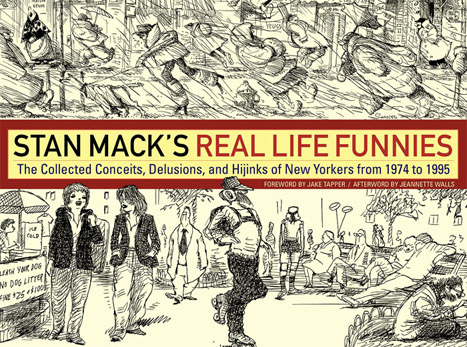
Cartoonist Stan Mack, a man with an uncanny sense of the ironic, has a new book coming out June 11, 2024, published by Fantagraphics. It chronicles his much revered Village Voice comic strip called Stan Mack’s Real Life Funnies, which appeared weekly from 1974 to 1995. It’s a beautiful book that appropriately pays homage to his insight and talent. The book is available for pre-order here.
Columnist and author Joe Enright just published this wonderful interview with Stan: Tales of New York – an interview with cartoonist Stan Mack, Red Hook Star-Revue, April 9, 2024.







